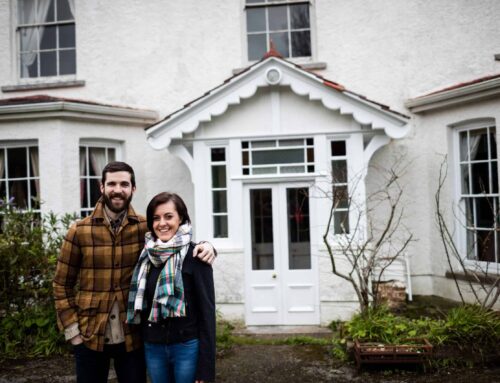San Francisco’s Best Investment Properties: A Strategic Guide for Investors
San Francisco has long been one of the most lucrative cities for real estate investment, but its competitive market and sky-high property prices can present challenges. Understanding where and how to invest is critical for maximizing returns. Whether you’re a seasoned investor or a first-timer looking to capitalize on this vibrant market, this guide will help you navigate the best investment properties in San Francisco and make informed decisions that align with your goals.
1. The Power of Location: Top Investment Neighborhoods in San Francisco
In real estate, location is key, and San Francisco is no exception. The city’s diverse neighborhoods offer a range of investment opportunities, each with its unique characteristics, growth potential, and rental income capabilities.
High-growth neighborhoods such as SoMa (South of Market), Mission District, and Dogpatch continue to show strong rental income potential and promise for long-term appreciation. These areas are bustling with tech companies, vibrant culture, and easy access to public transportation, making them attractive to both renters and buyers.
For emerging areas, consider Bayview-Hunters Point and Excelsior. These neighborhoods are undergoing significant revitalization and could provide higher returns for early investors. Although they may not be as well-known or as developed as some of the city’s more central areas, their growing appeal and affordable pricing offer substantial upside potential.
2. Multi-Family vs. Single-Family Homes for Investment
When considering investment properties, it’s crucial to understand the trade-off between multi-family and single-family homes.
Multi-family properties (like duplexes, triplexes, and apartment buildings) tend to offer more stable cash flow, thanks to rental income from multiple tenants. These properties also tend to have higher rental yields because you can charge multiple rents. Additionally, vacancies in multi-family buildings are less impactful, as you can still generate income from other units. The management may require more oversight, but the potential for consistent income makes them a popular choice for investors.
On the other hand, single-family homes are often easier to manage, especially in San Francisco’s competitive rental market. These properties generally appreciate in value over time, providing potential for long-term capital gains. They also attract family renters who prefer the stability and privacy of a single-family home. However, the rental income from a single-family home will likely be lower than a multi-family property, making them better suited for investors focused on appreciation rather than immediate cash flow.
3. Condominiums and Luxury Apartments as Investment Properties
San Francisco’s luxury market has continued to thrive, particularly in neighborhoods like Pacific Heights, Nob Hill, and the Financial District. Condos and luxury apartments in these prime locations often provide high rental income, as they attract tech professionals, executives, and international buyers looking for a stylish, low-maintenance property.
However, investing in luxury condos comes with its own set of challenges. HOA fees can be high, which impacts the return on investment (ROI). Additionally, the market for high-end properties can be somewhat volatile, depending on economic conditions and buyer demand. It’s essential to weigh the potential for high returns against these risks, especially if you’re targeting rental income over long-term appreciation.
4. Understanding San Francisco’s Rental Market Trends
To successfully invest in San Francisco real estate, understanding current rental market trends is critical. As of 2025, rental prices continue to rise, particularly in neighborhoods near tech hubs, universities, and public transportation.
Renters are flocking to areas close to major employers and transit lines, making neighborhoods like South of Market and Financial District desirable for high-end properties. Meanwhile, the short-term rental market (such as Airbnb) has grown significantly, particularly in tourist-heavy areas like Mission District and North Beach. Investors can potentially earn a premium by purchasing properties in these areas and renting them out short-term to vacationers.
When investing, consider vacancy rates and demand fluctuations, which are often influenced by the broader economic environment. Understanding these factors will help you forecast reliable rental income.
5. Cash Flow vs. Long-Term Appreciation: Finding the Right Balance
As an investor, you need to decide whether you’re more focused on immediate cash flow or long-term appreciation. These two objectives require different approaches.
Cash flow focuses on generating a steady income stream through rentals, with the goal of covering property expenses and generating profit. This typically involves properties with higher rental yields, such as multi-family units or homes in high-demand rental areas.
Long-term appreciation, on the other hand, prioritizes the growth of your property’s value over time. Single-family homes and properties in up-and-coming neighborhoods are prime candidates for appreciation, especially in areas undergoing redevelopment. Over the years, these properties are likely to increase in value, providing significant returns upon sale.
Depending on your investment strategy, finding a property that balances both cash flow and long-term appreciation will set you up for success.
6. Financing Your Investment Property in San Francisco
Securing financing for investment properties in San Francisco can be tricky due to the city’s high property prices and strict lending standards. However, several options are available to investors:
- Conventional loans are often the most common choice, especially for those with good credit and substantial down payments.
- Hard money loans may be an option for investors looking for quick funding, though they come with higher interest rates.
- Cash offers are also appealing in competitive markets, allowing investors to negotiate better terms and close faster.
Understanding the financial requirements and how to qualify for loans will be crucial when pursuing a real estate investment in San Francisco. Lenders may require a larger down payment for investment properties, and having excellent credit can help you secure better terms.
7. Navigating Local Regulations and Zoning Laws
San Francisco’s local market regulations—from rent control laws to building codes—play a significant role in how profitable an investment property can be. Investors must understand these regulations, as they directly impact rental income potential and property maintenance.
For example, rent control laws limit how much you can charge for rent in certain buildings, particularly older buildings built before 1979. This could impact your long-term rental income potential. Additionally, zoning laws dictate how properties can be used and developed, which may influence the return on investment.
Navigating these regulations can be complex, but understanding them helps investors make informed decisions about which properties to buy and how to maximize their ROI.
Conclusion
Investing in San Francisco real estate can be a highly profitable endeavor if approached strategically. By choosing the right location, understanding the dynamics of the rental market, and carefully evaluating property types, you can make informed decisions that align with your financial goals. Whether you’re interested in multi-family properties, luxury condos, or long-term appreciation, the San Francisco market offers ample opportunities for savvy investors.
Ready to explore the best investment opportunities in San Francisco? Contact us today for expert advice on finding high-return properties in the city’s competitive market.
FAQs
- What are the best neighborhoods for real estate investment in San Francisco? High-growth areas like SoMa, Mission District, and Dogpatch are ideal for high rental yields, while emerging neighborhoods like Bayview-Hunters Point and Excelsior offer great potential for long-term gains.
- What is the difference between investing in multi-family and single-family homes in SF? Multi-family properties typically offer more stable cash flow and higher rental yields, while single-family homes tend to appreciate more over time, offering long-term investment benefits.
3. How can I finance an investment property in San Francisco? Financing options include conventional loans, hard money loans, and cash offers. Larger down payments and good credit can improve your loan terms.




